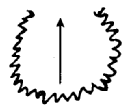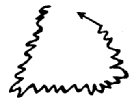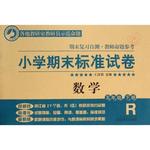题目内容
阅读理解
An experiment was once done by Karl von Frish, in which he studied bee activities when they returned to their home called a hive (蜂房). The experiment showed that there was a means by which a bee communicated to other bees that it had found food. That was dance!
In fact, bees do two kinds of dances to tell other bees of their food discovery. First, there is a circle dance, in which the bee moves in a circle inside the hive. The circle dance is used when the food is not more than ten meters away. A second kind of dance done by the bee is a waggling (摇摆) dance. That is to say, the bee wiggles (摆动) the end of its body as it moves in a straight line, then it turns in a semicircle (半圆), runs straight again. The waggling dance is used when the food is more than ten meters away. Meanwhile, in the two dances, the bees smell the dancing bee that has found the food. The smell tells them where to find the flower and also what kind of flower to look for.
For this really interesting work, Karl von Frisch won a Nobel Prize.
1.Karl von Frisch won a Nobel Prize for ________.
[ ]
A.communicating with bees
B.having studied bees' activities
C.setting up an experimental base
D.the discovery of bees' looking for food
2.If the food is ________ away, the bee will move in a circle.
[ ]
3.Which of the following can show the waggling dance?
[ ]




4.The bees know where to find the food by the ________ of the bee that has found it.
[ ]
5.Which of the following statements may be true?
[ ]
A.Karl von Firsch did the experiment to find out if bees had a language of their own.
B.In their spare time, bees often do two kinds of dances.
C.Bees can communicate to one another as human beings do.
D.In the circle dance, the bee waggles the hind half of its body.

 提分百分百检测卷单元期末测试卷系列答案
提分百分百检测卷单元期末测试卷系列答案 小学期末标准试卷系列答案
小学期末标准试卷系列答案
| |||||||||||||||||||||||||||||||||||||||||||||||||||||||||||